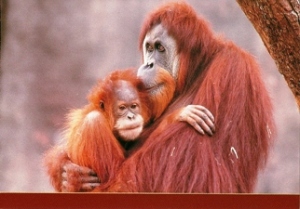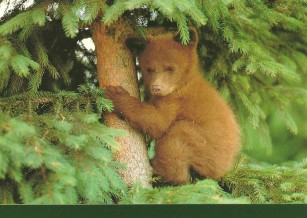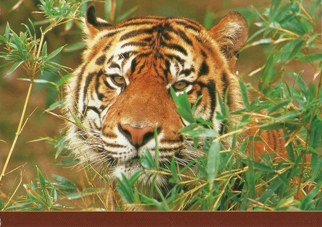Postcard Of A Arctic Fox (Alopex Iagopus) North America Wildlife The Arctic Fox has a compact body with short legs and ears for easy adaption to the subzero temperature. Its dense fur and thickly haired foot pads insulate against the cold and provide traction on ice. It stores surplus food by clawing through the soil and deep-freezing it on the permafrost below. Photographer: Tom Brakefield This postcard has white borders Postcard size 5×7 Get your Here!
Tag Archive: Pets Postcards
Postcard of Brown Pelican (Pelecanus occidentalis) North America Wildlife The brown pelican soars over the water is search of fish. Once the fish is spotted, the pelican plunges from heights of up to 30 feet to capture the fish in its expandable pouch. Though the pelican’s history dates back at least 30 million years, it was threatened with extinction in the 1970s because of DDT pollution in the fish it eats. The ban of DDT has improved the brown pelican’s chance of survival. Photographer- Birds as Art/Arthur Morris Postcard size 4 x 6 Get Your Here!.
Postcard of Canyon Country Wildlife Canyon Country Wildlife Includes a hardy group of creatures that endure extreme conditions in the high desert. Summer heat with little water and cold winters make it a tricky place to survive. But there is a rich and diverse family of creatures that succeed in this beautiful environment. They live in crakes and crevices hunting at night or twilight. You may not see them as they are shy and curious, leaving only a foot print in the wind-blown sand. Photographers- Erwin & Peggy Bauer, Richard Day, John P. George, George H. H. Huey, Jeff McDonald, Robert Winslow and The Image Finders Postcard size 4 x 6 Get Your Here!
Postcard of Orangutan (Pongo pygmaeux) Exotic Wildlife The orangutan is a tail-less primate with small ears and nose.it is solitary, rarely descending to the ground. The female and young form the only long-term bond. The males do not fight among each other and do not display any territorial behavior. It feeds on fruit, preferring figs, leaves, bark, shoots and flowers. Photographer- Barbara von Hoffmann Postcard size 4 x 6 GET YOUR HERE.
Postcard of Coyote (Cania latrans) North America Wildlife The Coyote is known for its vocalizations, the most distinct at dusk, dawn or at night. The young are born in April or May in a crevice or underground burrow. If the den is disturbed, the female will move her pups to a new home. They are blind and defenseless at birth and will emerge from the den at 2-3 weeks. They become independent at 6-9 months. Photographer- Tom Stacks & Associates/ Robert Winslow Postcard size 4 x 6 Get your HERE.
Postcard Black Bear Cub (Ursus americanus) North America Wildlife. Black Bear Cub (Ursus americanus). Weighing about ½ lb. at birth, black ear cubs usually arrive in early February while the female is denning up against the winter cold. The tiny naked newborn cuddle against their mother for warmth and to nurse. Mother bears are fiercely protective of their cubs and will fught to the death to protect them. Photographer-First Light/ Thomas Kitchin Postcard size 4 x 6 Get your Here!
Postcard of a Jaguar ( Panthera onca ) The jaguar (Panthera onca) is a big cat, a feline in the Panthera genus, and is the only Panthera species found in the Americas. The jaguar is the third-largest feline after the tiger and the lion, and the largest in the Western Hemisphere. The jaguar’s present range extends from Southern US and Mexico across much of Central America and south to Paraguay and northern Argentina. Apart from a known and possibly breeding population in Arizona (southeast of Tucson), the cat has largely been extirpated from the United States since the early 20th century. Postcard size 4 x 6 Get your here!.
Postcard of a Raccoon (Procyon lotor). Native only to the Americas, the raccoon is a nocturnal, solitary animal. It spends most nights foraging for food along stream banks. Raccoons sometimes appear to wash their food, however, they are actually wetting their paws to increase their sense of touch as they knead and tear their food, feeding for inedible material. Females prefer to nest in hallow trees or other protected places. Photographer- Karen McClymonds North America Wildlife Postcard size 4 x 6 Get Yours Here!
Postcard of a Sumatran Tiger (Panthera tigris) A solitary animal, the tiger patrols a territory which it has marked with droppings and other signs. During winter, it can accumulate up to two inches of fat beneath its skin. Photographer- Barbara von Hoffmann Postcard size 4 x 6 GET YOUR HERE>
 Postcard of African bush Elephant (Loxodonta africana) The African Bush Elephant or African Savanna Elephant (Loxodonta africana) is the larger of the two species of African elephant. Both it and the African Forest Elephant have usually been classified as a single species, known simply as the African Elephant. Some authorities still consider the currently available evidence insufficient for splitting the African Elephant into two species. It is also known as the Bush Elephant. Postcard size 5X7 This postcard has a white border
Postcard of African bush Elephant (Loxodonta africana) The African Bush Elephant or African Savanna Elephant (Loxodonta africana) is the larger of the two species of African elephant. Both it and the African Forest Elephant have usually been classified as a single species, known simply as the African Elephant. Some authorities still consider the currently available evidence insufficient for splitting the African Elephant into two species. It is also known as the Bush Elephant. Postcard size 5X7 This postcard has a white border









